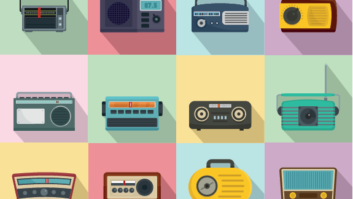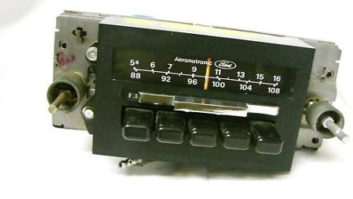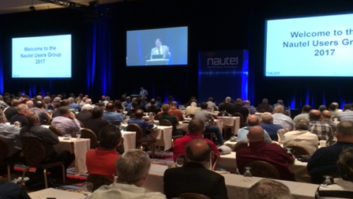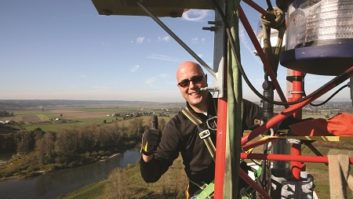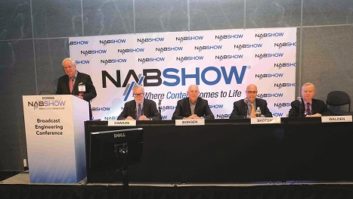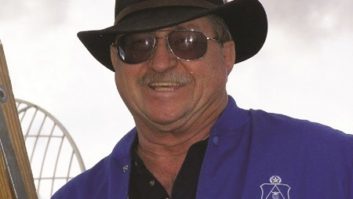The author is owner of WGTO (AM) and W266BS in Cassopolis, Mich. His commentaries are a recurring feature. Here, his comments are as filed with the FCC in the AM Revitalization proceeding.
The Federal Communications Commission is to be commended for its unusually proactive move on the issue of AM revitalization. The method chosen by the Commission to accept applications for changes and new FM translators is to be applauded. While not everyone will be happy, the method is as fair as can be done based on the varied needs and interests.

Larry Langford
I will limit my comments to proposed changes and two suggestions for further study.
The Commission must temper its rulings and orders with knowledge of how the real world works and how such orders and rulings will impact those who actually operate under them. In the case of translators I feel the real world and the current regulations are at odds due to the rules of propagation versus practical application. I believe the Commission needs to take a close look at the issue of power versus height for translators.
The Commission does not limit the power of a translator, which is mounted on a very tall tower, below the maximum 250 W.
Those AM operators that can find a commercial FM tower or TV tower to use can get amazing range if they are able to satisfy interference limitations. Tall towers also make it easier to get a second adjacency wavier in that half wave spaced elements can reduce downward radiation to the point where there is no interfering contour at or near ground level. However the Commission does not have any provision for raising the ERP of a translator to a known equivalent if it is mounted on a tower that is extremely short and or located in an area that has a very low height of average terrain ( HAAT) since many AM towers are located in low lying areas to take advantage of improved conductivity.
Most of the Class C and D radio stations that are in desperate need of translator operation are the very stations that are having the most financial difficulty. For most of these stations the first option using a translator will be to mount it on the AM tower. The great majority of Class C and D stations use a tower or towers that are 90 electrical degrees in height. This means that a station operating at 1600 may have a tower that is only 46 meters in height. A single element FM antenna at the 45 meter level will have a distance to the 60 dbu contour of about 8.5 kilometers. Since most AM stations are located outside the urbanized area they cover this means that some stations will not be able to deliver a usable signal in the city of license from the AM tower using the FM translator. The simple answer you might think is to find a location in town to place the FM antenna. But this involves more expense and engineering. The most practical answer would be to allow the AM station using its AM tower as a mount for the FM translator to adjust the ERP based on the HAAT at the tower site. Using the standard 100 meter tower, which most class A FM stations use as the normal tower height, we would find that an ERP of .25 KW would give a distance to the 60 contour at just under 13 kilometers.
This is a reasonable distance and I submit that this should serve as the “standard” floor for translator operation.
If we use that as a basis for an adjustable ERP based on HAAT when used on an AM tower, then a station having a 45 meter tower (90 degrees at 1700) would need an ERP of 1kw to make even 12 kilometers. Keep in mind that if the towers are located in a valley then the actual HAAT could easily be 40 meters or less. While some will cringe at allowing a full kilowatt from a translator, it’s not the power that we should be concerned about it’s the contour. And as long as the contour does not cause interference based on the accepted criteria for prohibited overlap, I see no reason that the ERP could not be as high as required to achieve the nominal 60 dbu contour distance of 12 kilometers based on the .25 kw at 100 meter equivalent. The Commission does not reject an application that has a .25 KW translator that is proposed to operate from a 166 meter (500 foot) HAAT tower, which would give the lucky applicant a distance to 60 dbu of nearly 17 kilometers. So clearly it’s not the contour that is being regulated but the power. Those who by the laws of physics and low terrain have inferior AM tower height and or location when used as an FM site should not be limited to .25 kw as an arbitrary number when the same power might be allowed from the same site if the broadcaster were able to install a 500 foot tower.
I am not calling for the Commission to limit power on tall towers but rather allow increased power for stations that have or propose translators that are mounted to the actual AM tower and have an HAAT that is below 100 meters provided that all other contour protections are met for overlap. This would ensure a more uniform expectation of operation from those stations that opt to use translators for fill in service. For stations with HAAT of less than 100 meters a sliding scale should be imposed for ERP that tops at 1kw which would cover any 90 degree tower in the standard or expanded band for a contour distance of 12 kilometers for the 60dbu level.
Change in Daytime Protection
I support the proposed changes to the daytime protection of AM stations from .5mv to 2mv but, as others have commented, the Commission must deal with the 1kw cap now in place on the six local frequencies that now allow 24 hours 1kw operation.
I believe the “pecking order” on allowing stations to increase power to take advantage of the new protection contours needs to be carefully done. Where co-channel stations in a region have different power levels now, those stations with the lowest current power should be allowed to request a power increase first. In the case of my station WGTO which operates at 910 and 1 kw, we are co-channel to WSUI at 5kw and WFDF at 50 Kw. While WFDF would not be able to increase power past the current 50 Kw U.S. limit, the station could drastically change its directional pattern and in effect lock WGTO out from any substantial increase. Such a directional change would have very little effect in the main coverage area now enjoyed by WFDF; it would have a devastating impact on the 1kw operation of WGTO. Under the proposed rule changes, WGTO could go to 10 kw non-directional if WFDF maintains its current pattern at 50 kw directional.
The Commission must anticipate what I would call “greed” applications from high power stations that would shut out smaller stations from making improvements simply because they “can.” Daytime stations need first crack that are now operating at 1kw or less followed by higher power stations.
Suggestions for Receiver Standards
While I applaud the AM revitalization plan overall I find that it lacks in one basic area. If we limit the plan to what we do with the actual AM service, translators notwithstanding, then we must look at the weakest link in the overall delivery system of AM radio. That weak link is the AM receiver. The FCC regulates aspects of both FM radio receivers and television sets. Yet no standard exists for minimum distortion or response of AM receivers. Time and time again it has been proven that the FCC cannot expect manufacturers to improve the basic AM radio without direct intervention from the FCC. In the 1980’s a group was formed called the NRSC that held lengthy discussions on adapting new standards for AM transmission that would allow manufacturers to come up with a “standard receiver” that would allow increased bandwidth without so called “monkey chatter” that was high frequency splatter caused by excessive high frequency pre-emphasis from the transmitter side.
The hard work of the NRSC was for nothing because even though members of the Electronic Industry Association (EIA), which represents radio makers, sat at the table and promised to retool AM radios based on the new agreed standard IF radio stations would adopt the new standard. Not only did stations adopt the new NRSC pre-emphasis curve, the FCC mandated it as a transmission mask and the law of the land. That was more than 20 years ago and the EIA has yet to make good on its promise to make the radios comply with the NRSC standard. The result is that we have radios that sound worse than they did in the 80’s because the NRSC curve actually sounds dull compared to the pre-emphasis curve many stations were using before the standard due to the poor top end of the typical radio. The Orban Optimod was designed based on the need for extreme pre-emphasis and the curve adopted by Orban was needed and sadly is still needed to get decent sound out of today’s radios, which are no better than those of the 80’s. Because of this the stations transmitting a pure NRSC pre emphasis curve without augmentation sound less bright that those still using the Orban standard that was copied by other manufacturers even with the NRSC mandated mask. Fortunately many high end processors have the option of using the NRSC curve or a more aggressive curve like the Orban standard.
The FCC had no trouble mandating the new expanded band for radios sold in the U.S., but the FCC still fails to implement any kind of minimum audio response standard. This in my opinion defeats the entire AM revitalization plan as it reflects on AM radio itself. NRSC studies have shown the typical radio available to consumers has a sharp roll-off that starts at 2 kHz. I ask why this is necessary since all stations have the NRSC mask in place and the days of splatter are over. Nearly all radios sold in the U.S. are made from a single chip set that can easily be reprogrammed to allow a band-pass that rolls off at a higher point such as 5 or 6 kHz. The comparison is amazing and could simply be done if the FCC mandated it. While this would do nothing for the millions of radios already in service, it would change car radios in a short time and the impact on the public perception of AM as a quality medium would be seen rapidly. The typical AM listener is not a “DX” fan who spends late nights looking for distant stations and needs high selectivity to “pull them out.” If most AM daytime listening is done inside the 2mv curve of the subject station, there is no need to clamp the band-pass down to a muddy mess at 2 or 3 kHz.
Sadly, the FCC has never even addressed the issue. How can we be serious about revitalization if we do not even pay minimal attention to the last link in the system, the receiver itself? Yes the Commission could go as far as to require noise blankers and variable bandwidth but a simple start would be a new minimum bandwidth that would take the stigma of dull and muddy sound away from AM. The result would be more music on AM and that means more acceptance of the senior band again. I close by saying you can’t fix AM radio without fixing the AM radios.





